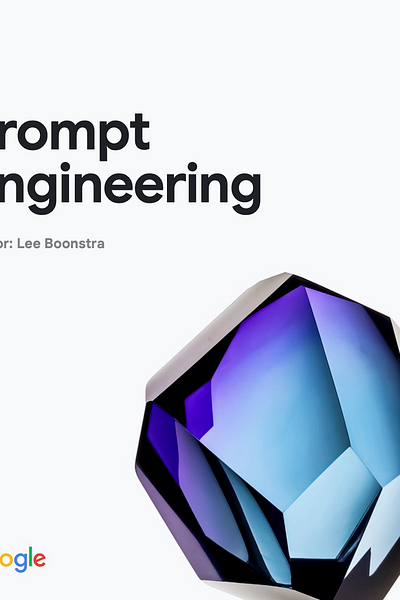What Google Just Revealed About AI Prompting (That Works)
Google's new prompt engineering whitepaper decoded: 5 practical techniques anyone can use, common misconceptions debunked, and tools that save time.
Hey Adopter,
I just spent hours dissecting Google's brand new 68-page prompt engineering whitepaper so you don't have to. This freshly published report offers a comprehensive look at the current state of prompt engineering - but while engineers debate the finer points of token sampling and self-consistency algorithms, you need something that works on Monday morning.
It's The Truth About Prompting
Most companies approach AI prompting like they're casting spells - mysterious incantations that might summon business value if you get the magic words right. This mindset explains why so many AI projects fizzle out after the initial excitement.
The reality? Prompt engineering isn't magic - it's just clear communication with a machine. Google's report confirms what we've seen in the trenches: you don't need a PhD to write effective prompts, you just need to be methodical and specific.
The Biggest Misconceptions You Need to Drop
Misconception #1: You need technical expertise to write good prompts
Reality check: Clear communication beats technical knowledge every time. The paper clearly shows that being specific and methodical matters more than understanding the inner workings of AI.
Misconception #2: More words = better results
The whitepaper makes this clear: concise, clear language beats verbose instructions. Your prompts shouldn't read like legal contracts. Be direct, use action verbs, and ditch unnecessary context.
Misconception #3: There's a "perfect prompt" out there
Google's research shows prompt engineering is about experimentation, not perfection. Don't waste time hunting for magical prompt templates online. Instead, build a collection of what works for your specific needs.
Five Beginner-Friendly Techniques That Work
1. Show, Don't Tell
The most powerful trick isn't complex at all: show the AI what you want instead of explaining it. Want a specific email format? Give it an example. Need a particular report style? Show it one.
Action step: Before writing a long prompt, create a quick example of your desired output first. Then simply say "Write more like this..."
2. Use Action Verbs at the Start
Google's research confirms something stupidly simple: starting your prompt with a clear action verb dramatically improves results. Instead of "I need information about marketing strategies," try "Analyze the top 3 marketing strategies for small businesses."
Quick reference: Action verbs that work well: Analyze, Compare, Describe, Explain, List, Summarize, Identify.
3. Be Specific About Length and Format
Instead of hoping the AI magically knows what you want, tell it exactly. "Write a 2-paragraph email" works better than "Write an email." "Create 5 bullet points" beats "Give me some ideas."
Example transformation:
❌ "Tell me about project management"
✅ "Explain 3 project management basics in one paragraph each"
4. Break Complex Tasks Into Steps
Google's paper shows that AI performs significantly better when you break complicated tasks into smaller chunks. Instead of one massive prompt, try a series of smaller ones.
Example: Rather than "Create a complete marketing plan," try:
"List 5 target customer segments for my coffee shop"
"For each segment, suggest one marketing approach"
"Create a one-month timeline for implementing these approaches"
5. Keep a Prompt Journal
The simplest but most powerful technique from Google's research: track what works. Keep a document with your successful prompts. Copy, paste, and modify them instead of starting from scratch each time.
Quick start: Create a simple document with three columns:
Prompt | What it did well | What could be better
The Right Tool for the Job: Right-Click Prompt
Speaking of keeping a prompt journal - here's a tool built specifically for AI Adopters like us that solves this exact problem.
Right-Click Prompt (https://rightclickprompt.com/) is a Chrome extension that turns all that prompt theory into a practical reality.
Instead of scattering your working prompts across notes apps, documents, and stickyRCP saves winning prompts in the browser, allowing for instant application to ChatGPT, Claude, or Bard. It streamlines the AI workflow by eliminating friction and making AI integration seamless.
The Bottom Line
The most valuable insight from Google's whitepaper isn't about complex techniques or advanced settings. It's about the process: try something simple, see what works, make notes, and improve. The companies getting real value from AI aren't the ones with the most technical knowledge - they're the ones willing to experiment systematically.
Tomorrow, start small. Pick one business process, craft a few prompts using the five techniques above, document what happens, and iterate. One working prototype beats a thousand perfect plans.
Adapt & Create,
Kamil






Good summary.
https://substack.com/@readfuturecore/note/p-166422582?r=5vwhbx&utm_medium=ios&utm_source=notes-share-action